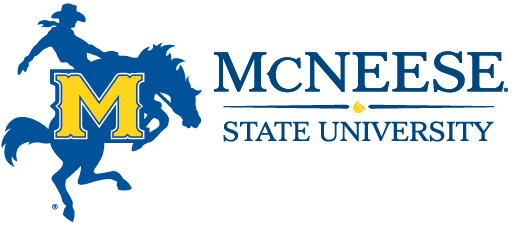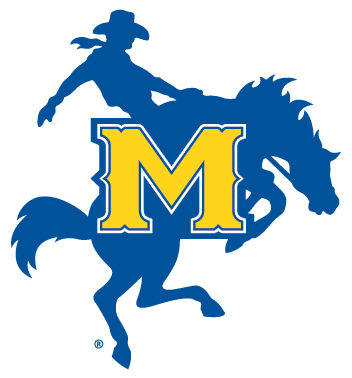Student Loans 101
What are Student Loans?
Student loans are funds borrowed to pay for tuition and other university expenses, and must be repaid with interest. While both the federal government and private institutions offer student loans, federal loans have benefits like fixed interest rates and income-driven repayment plans. Before looking into private loans, you should explore all your options for federal student aid. Find out how much you qualify for by filling out a Free Application for Federal Student Aid (FAFSA).
There are two main types of federal student loans:
- Direct Subsidized Loans (also known as Direct Stafford Loans or Stafford Loans) – Students with a demonstrated financial need (determined by FAFSA) may qualify for subsidized student loans. In this type of loan, students do not have to pay interest on loans while enrolled or during a six month grace period after graduation.
- Direct Unsubsidized Loans – Regardless of financial need, all students qualify for unsubsidized loans. With this type of loan, students are responsible for making interest payments on loans while enrolled.
What loans you qualify for also vary based on how many credit hours you have, and whether you are an independent or dependent student. Continuing and transfer students may apply if they have earned the required number of hours each year with a grade point average of at least 2.0.
Independent or Dependent?
You’re an Independent Student if you’re one of the following:
• at least 24 years old
• married
• have legal dependents other than a spouse
• a graduate or professional student
• a veteran or a member of the armed forces
• an orphan
• a ward of the court
• an emancipated minor or
• someone who is homeless or at risk of becoming homeless
Qualifying for Student Loans
No matter the type of direct loan, you must maintain Satisfactory Academic Progress (SAP) and be enrolled for at least 6 credit hours to qualify for federal student loans. While you can potentially qualify for both subsidized and unsubsidized loans, there are annual limits on the amount you may be eligible to receive each year.
There are also limits on the total amounts that you may borrow during your education as an undergraduate or graduate student (also known as aggregate limits). If you reach the aggregate limit, you won’t qualify for any more loans unless you start repaying your loans.
Remember, these numbers are the maximum amounts — the loan amount you are eligible for may be less than what’s listed here. Fill out and submit your FAFSA early to know exactly what you qualify for.
Entrance Counseling
- All first-time borrowers with less than 30 hours earned AND/OR all first-time borrowers at McNeese (regardless of hours earned) must complete Entrance Counseling at Entrance Counseling | Federal Student Aid before loans will be originated.
Master Promissory Note
- All student loan borrowers must complete and submit a Master Promissory Note (MPN) electronically at Completing a Master Promissory Note | Federal Student Aid
| Year | Subsidized Limit | Annual Limit (includes both subsidized and unsubsidized loan amounts) |
| Freshmen (under 30 hrs.) | $3,500 | $5,500 |
| Sophomore (over 30 hrs., under 60) | $4,500 | $6,500 |
| Junior (over 60 hrs., under 90) | $5,500 | $7,500 |
| Senior (over 90) | $5,500 | $7,500 |
| Aggregate Loan Limit | $23,000 | $31,000 |
| Year | Subsidized Limit | Annual Limit (includes both subsidized and unsubsidized loans) |
| Freshmen (under 30 hrs.) | $3,500 | $9,500 |
| Sophomore (over 30 hrs., under 60) | $4,500 | $10,500 |
| Junior (over 60 hrs., under 90) | $5,500 | $12,500 |
| Senior (over 60 hrs., under 90) | $5,500 | $12,500 |
| Professional or Graduate Student | N/A | $20,500 |
| Total Undergraduate Aggregate Loan Limit | $23,000 | $57,000 |
| Total Professional or Graduate Student Aggregate Loan Limit | $65,500 (includes all loans received in undergraduate study) | $138,500 (includes all loans received in undergraduate study) |
PLUS Loans
PLUS loans are available to qualifying parents of dependent undergraduate students enrolled in at least 6 semester hours, and professional or graduate students. Like with direct subsidized and unsubsidized loans, the Department of Education is the lender. Unlike unsubsidized or subsidized loans, however, applicants must not have adverse credit history to qualify.
A credit check will be conducted once you apply to determine your eligibility. The maximum PLUS loan amount you can receive is the cost of attendance at the time of awarding minus any other financial aid you are receiving. Find out more about PLUS loans.
You may have adverse credit history if you have:
- An outstanding balance of more than $2,085 that is more than 90 days delinquent, or that has been charged off or placed in collections in the last two years.
- A default determination in the last five years.
- A bankruptcy discharge in the last five years.
- A repossession in the last five years.
- A foreclosure in the last five years.
- A charge-off/write-off of federal student aid debt in the last five years.
- Wage garnishment in the last five years.
- A tax lien in the last five years.
Disbursements:
- First-Time Borrowers – If this is your first time borrowing a student loan, your first disbursement will take place 30 calendar days after the start of the regular semester. The 30-day delay will only take place in the first semester; the first time you borrow a loan.
- Federal Direct Loans are Always in Two Disbursements: All Direct Loans must be disbursed in two separate disbursements regardless of length of loan period. For example: Students attending both Fall and Spring semesters receive two disbursements; one in the Fall and one in the Spring. Students attending only one semester in an academic year (ex. Fall Only, Spring Only, or Summer Only) receive two disbursements; one at the beginning of the semester after enrollment is final and one at the midpoint.
- Must be enrolled in 6 credit hours
Exit Counseling
You must complete exit counseling when you leave school or drop below half-time enrollment (under 6 hours). The purpose of this counseling is to ensure you understand your student loan obligations and are prepared for repayment. You can complete exit counseling on Student Aid.gov. https://studentaid.gov/exit-counseling/
Repayment
When you enter into repayment for your loans, you can pick from repayment plans that base your monthly payment on your income or that give you a fixed monthly payment over a set repayment period. For more information, see Repayment Plans | Federal Student Aid
Fees and Interest
For most federal student loans, you’ll be charged a percentage of the loan amount as a fee, which will be deducted from each disbursement you receive. While this means the amount you receive will be slightly less than what you borrow, you’re still responsible for repaying the entire loan.
Interest on student loans is calculated based on how much you have in unpaid loans. Depending on whether your loans are subsidized or unsubsidized, you may be responsible for paying the interest on your loans while you’re enrolled. If you don’t make interest payments when you’re responsible for paying them, the amount may be added to the total amount of your loan.
Interest Rates for Direct Subsidized Loans, Direct Unsubsidized Loans, and Direct PLUS Loans
First disbursed on or after July 1, 2024 and before July 1, 2025
| Loan Type | Borrower Type | Fixed Interest Rate |
|---|---|---|
| Direct Subsidized Loans and Direct Unsubsidized Loans | For Undergraduate Students | 6.53% |
| Direct Unsubsidized Loans | For Graduate or Professional Students | 8.08% |
| Direct PLUS Loans | For Parents of Dependent Undergraduate Students and for Graduates or Professional Students | 9.08% |
Direct Unsubsidized Loans, and Direct PLUS Loans
Interest Rates for Direct Subsidized Loans, Direct Unsubsidized Loans, and Direct PLUS Loans
First disbursed on or after July 1, 2025 and before July 1, 2026
| Loan Type | Borrower Type | Fixed Interest Rate |
|---|---|---|
| Direct Subsidized Loans and Direct Unsubsidized Loans | For Undergraduate Students | 6.39% |
| Direct Unsubsidized Loans | For Graduate or Professional Students | 7.94% |
| Direct PLUS Loans | For Parents of Dependent Undergraduate Students and for Graduates or Professional Students | 8.94% |
Direct Unsubsidized Loans, and Direct PLUS Loans
Federal Perkins Student Loan Program
Federal Perkins Loans were low interest federal loans offered to students who expressed sufficient financial need. As of October 1, 2017, other than for pre-existing 2017-18 disbursements, Federal Perkins Loans are no longer available. As of May 2024, McNeese State University has completed the liquidation process of all Federal Perkins Loans disbursed by the University. All borrowers have been assigned to a new loan servicer, see loan servicing information below:
Department of Education
ECSI Federal Perkins Loan Servicer
P.O. Box 836
Coraopolis, PA 15108
866-313-3797
https://borrowerefpls.ed.gov

